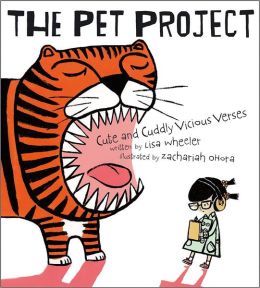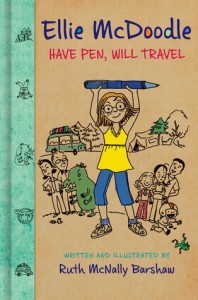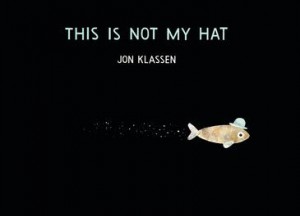The Pet Project
 As soon as I picked up this new poetry book, The Pet Project, I thought of the animal reports many of my students are doing and I knew I must get this book into the hands of those kids and their teachers! The Pet Project: Cute and Cuddly Vicious Verses written by Lisa Wheeler and illustrated by Zachariah Ohora begins with this ominous verse:
As soon as I picked up this new poetry book, The Pet Project, I thought of the animal reports many of my students are doing and I knew I must get this book into the hands of those kids and their teachers! The Pet Project: Cute and Cuddly Vicious Verses written by Lisa Wheeler and illustrated by Zachariah Ohora begins with this ominous verse:
Warning!
If you’re the type who oohs and ahhs
at furry faces, precious paws,
the words ahead may be alarming:
Animals aren’t always charming.
Considering that I’ve been giving stacks of informational animal books to teacher-friends for student research projects, this poetry book comes at exactly the right time. It’s poetry month (hello, Range of Reading Standard!) and each poem about a different animal just begs to be compared to an informational book that will confirm the cool, and sometimes gross, facts. (Integrating Knowledge and Ideas? Check!)
For example, if you’ve got students who’re interested in monkeys, share this gem:
Monkey
He looks so like a little man
with smiling teeth and grasping hand.
He chatters to his monkey friends,
but that is where the likeness ends.
His hair is full of bugs and lice.
He flings his poo – His aim’s precise.
His scream sounds like a banshee’s wail.
He swings from his prehensile tail.
And worst of all he smells so funky.
If he’s a man, then I’m a monkey!
After your students calm down from giggling over poo-flinging, the research-sparking discussion can begin. Do monkeys really fling poo? What does prehensile mean? Do monkeys really smell funky? Time to pull out the informational non-fiction books for a fact-finding expedition. I love that Wheeler never dumbs down her vocabulary (you’ll find query, devise, and formulate all in the second poem). Discussing all the wonderful words she chose will help you hit the Craft and Structure Standard. So one little picture book can help you teach three Common Core State Standards, kick off student-led research projects, enrich vocabulary, and strengthen the love of poetry. I think we’ve just found a new teacher’s pet in The Pet Project.
For more information on the author, please visit: lisawheelerbooks.com.For more information on the illustrator, please visit: zohora.com.
Read MoreEllie McDoodle: Have Pen, Will Travel
 It’s officially the first day of spring, and yes, we have snow in Michigan. *sigh* I need a good book to lift my spirits, and I’ve found the perfect one: Ellie McDoodle: Have Pen, Will Travel written and illustrated by Ruth McNally Barshaw.
It’s officially the first day of spring, and yes, we have snow in Michigan. *sigh* I need a good book to lift my spirits, and I’ve found the perfect one: Ellie McDoodle: Have Pen, Will Travel written and illustrated by Ruth McNally Barshaw.
Usually I blog about picture books to use with students in preschool through third grade. This book is different; it’s what I call a “highly illustrated novel”, ideal for your second and third graders (also appropriate for those first grade super readers). If you’ve had kids clamoring for Diary of a Wimpy Kid books, give them Ellie. The Wimpy Kid is in middle school, and he’s not a particularly great role model (part of his appeal to the older crowd). Ellie McDoodle has all the cool doodles throughout the book like the Wimpy Kid books, but Ellie is an awesome chick. She’s into nature and drawing so she appeals to boys and girls, and she’s a good kid. This first book in the Ellie McDoodle series has Ellie off on a camping trip with her cousins and her little brother, Ben-Ben. She journals the ups and downs of it all in this book.
We just had Ruth McNally Barshaw come talk to 200 fifth graders who’d studied this book as part of our Battle of the Books. Ruth was phenomenal. Our fifth graders cheered like they were meeting a rock star! They loved this book and are quickly gobbling up the next three books in the series (Ellie McDoodle: New Girl in School, Ellie McDoodle: Best Friends Fur-Ever, Ellie McDoodle: Most Valuable Player – books 5 and 6 are in the works).
So share Ellie McDoodle: Have Pen, Will Travel with your students, especially the author’s note at the end where Ruth describes how to keep a sketch journal. Talking about the information found in the illustrations and how it supports the text is a way to hit the Common Core State Standard of Integrating Knowledge & Ideas. Give the kids paper to make their own mini-journals, and encourage them to doodle, write, and record events from their lives. Even reluctant writers and artists will be drawn in by Ruth’s fun doodle tips also found at the back of the book.
For more information about Ruth McNally Barshaw, please visit: ruthexpress.com.
Read MoreTwo Perfect “Picks” for Valentine’s Day: Porcupining and Hokey Pokey
This Valentine’s Day, I’d like to share with the readers I love (you!) some of the things I love: wonderful pun-packed picture books by my author-crush Lisa Wheeler and free, already-planned activities to make teaching those books super-easy.
Porcupining: a Prickly Love Story and Hokey Pokey: Another Prickly Love Story, both written by Lisa Wheeler and illustrated by Janie Bynum, feature one of my most-beloved picture book characters, Cushion the Porcupine. We first meet Cushion in Porcupining where he is looking for love in all the wrong places. This forlorn hero of the petting zoo finally finds true love with Barb, a hedgehog. Then, in Hokey Pokey, Cushion wants to make his beloved Barb happy by learning to dance. Asking a fox, a rabbit, and a chicken for dance lessons only leads to prickly situations, and once again Cushion seems stuck out of luck. But Barb proves to be the perfect pick for Cushion when she teaches him all the moves he needs, and together they dance the Hokey Pokey.
 Comparing and contrasting two stories with the same characters, same author, and/or same illustrator is a great way to teach the Common Core State Standard of Integrating Knowledge and Ideas. On her website lisawheelerbooks.com, Lisa has a free teacher’s guide to go with these books. Use the graphic organizer from the teacher guide for Porcupining (written by super-cool author Tracie Vaughn Zimmer) to compare the main character, the problem, the three ways the character tries to solve the problem, and the solution in both books. Then, print off the adorable recipe cards for Cushion Cookies (made by another super-cool author Hope Vestergaard) and your Valentine’s Day is set!
Comparing and contrasting two stories with the same characters, same author, and/or same illustrator is a great way to teach the Common Core State Standard of Integrating Knowledge and Ideas. On her website lisawheelerbooks.com, Lisa has a free teacher’s guide to go with these books. Use the graphic organizer from the teacher guide for Porcupining (written by super-cool author Tracie Vaughn Zimmer) to compare the main character, the problem, the three ways the character tries to solve the problem, and the solution in both books. Then, print off the adorable recipe cards for Cushion Cookies (made by another super-cool author Hope Vestergaard) and your Valentine’s Day is set!
“This Is Not My Hat” wins the Caldecott Medal!
 If you’re a kid-lit lover like me, you already know that This Is Not My Hat written and illustrated by Jon Klassen won the Caldecott Medal for 2012. (Were you huddled around your computer screen that morning, too, watching the live broadcast and squealing when your favorites were announced? Just me? Ok.)
If you’re a kid-lit lover like me, you already know that This Is Not My Hat written and illustrated by Jon Klassen won the Caldecott Medal for 2012. (Were you huddled around your computer screen that morning, too, watching the live broadcast and squealing when your favorites were announced? Just me? Ok.)
This Is Not My Hat is an ideal picture book to teach the Common Core Standard of Integrating Knowledge & Ideas: “Use information gained from the illustrations and words in a print or digital text to demonstrate understanding of its characters, setting, or plot” and “explain how specific aspects of a text’s illustrations contribute to what is conveyed by the words in a story (e.g., create mood, emphasize aspects of a character or setting).” The story told by the text is not exactly the same as the story told by the pictures. (Working on a lesson on inference? Grab this book!)
A little fish (the fellow you see on the cover) is narrating the story as he swims. “This hat is not mine,” he admits. He stole it from a big fish, and we see the big fish sleeping. “…(H)e probably won’t wake up for a long time,” says the little fish, and we see the same illustration of that big fish, but now his eyes are wide open. So all the words are from the little fish’s point of view, but we see in the illustrations what the little fish doesn’t realize – the big fish does realize his hat was stolen, does know who took it, and is out to get his hat back. The end shows the big fish with his tiny hat back on his head, and the little fish is nowhere to be seen. Anyone want to infer what happened in the end?
Kids who loved Klassen’s I Want My Hat Back will adore this book, and find similarities beyond the hat theme. So share This Is Not My Hat and compare the information gained from the illustrations to the information we get from the text, and then compare the two books, and you’ll have a double-whammy Integration of Knowledge & Ideas lesson! The endings for both books is left up to the reader to figure out. You can have students debate what they think happens at the end, and give reasons to support their position. Do any of your students think the little fish got away? If he did, what might happen next?
Because there are only three characters in This Is Not My Hat (little fish, big fish, and tattle-tale crab) it’s super-easy to make a Storybox with the book and either stuffed animals, puppets, or felt pieces of the characters for kids to retell the story. If you’re crafty, have kids make hats from brown paper bags (keeping with Klassen’s muted tones) for them to swap and declare, “This is not my hat!”
Read More







